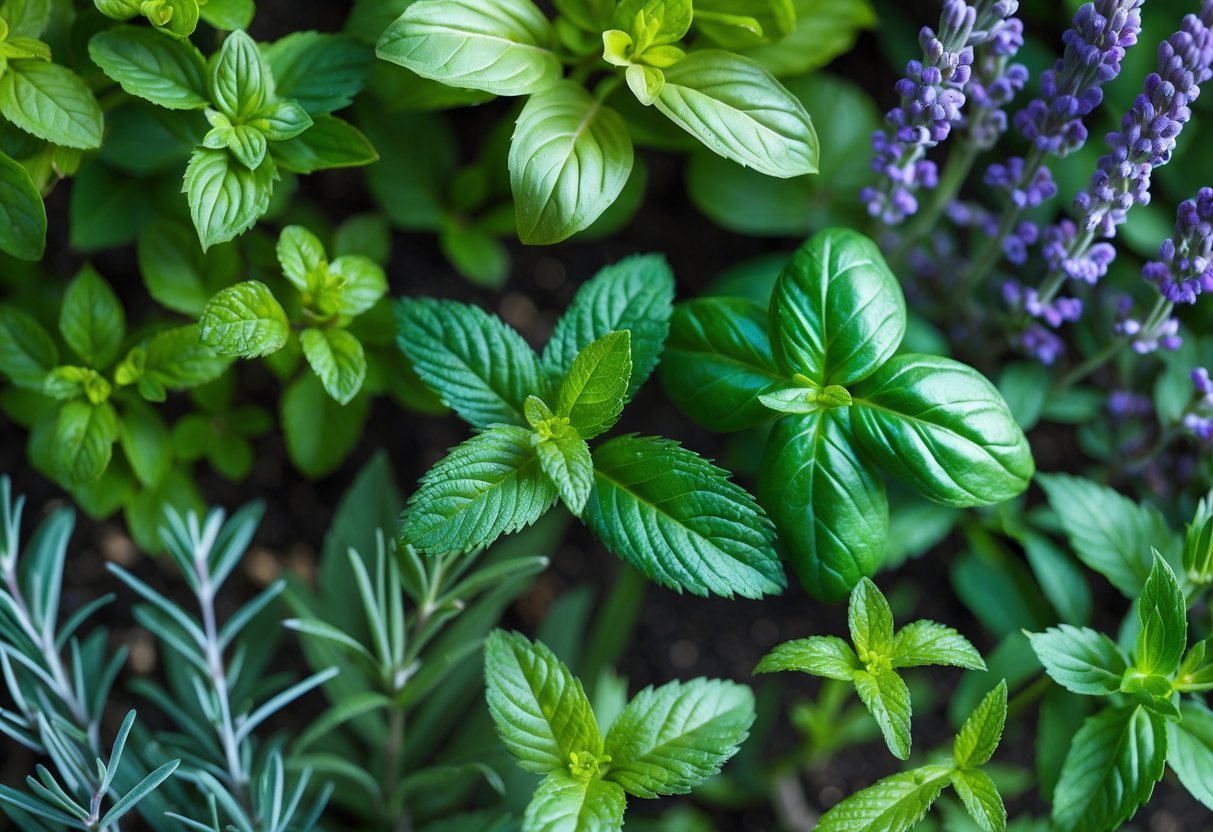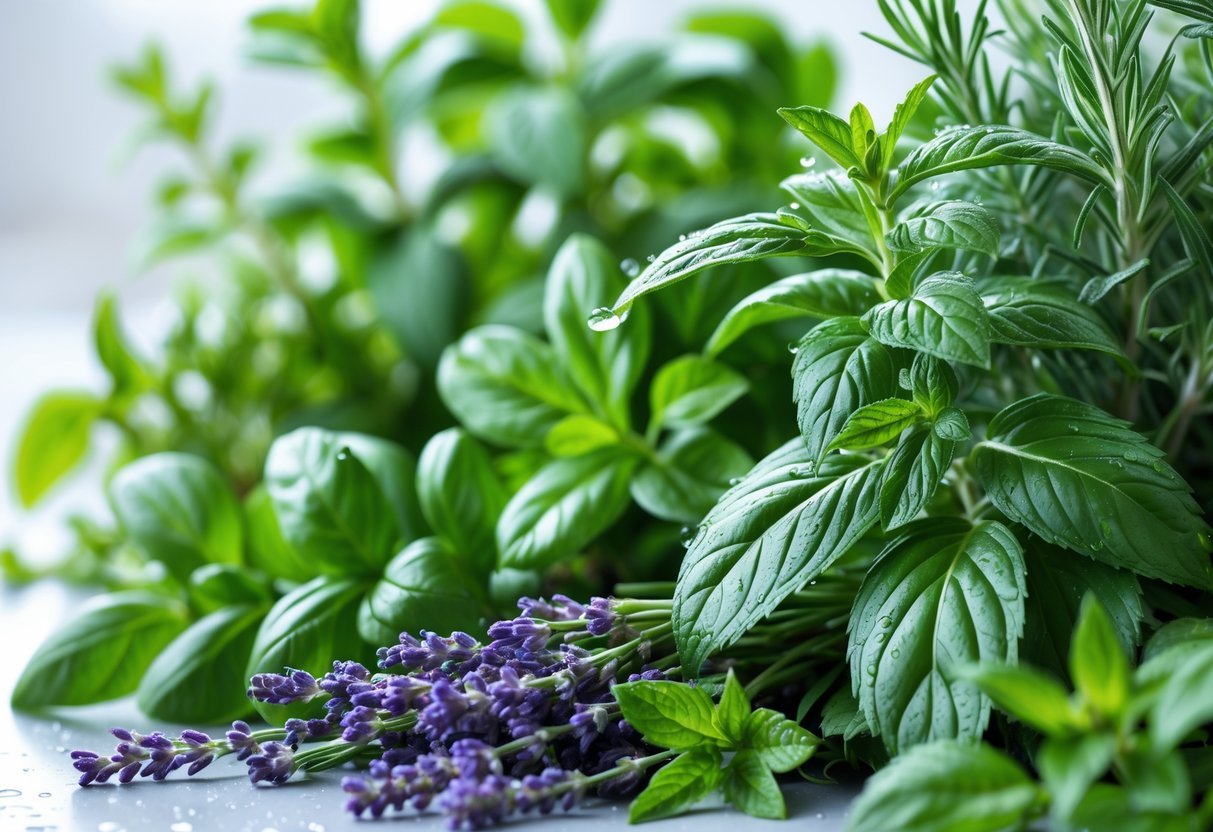Plants with aromatic leaves bring a whole new dimension to a garden’s fragrance—one that isn’t just about flowers. Unlike blooms that might only catch your nose when they’re at their peak, these leafy wonders release their scent whenever you brush by or give them a little squeeze. It’s a game-changer for anyone who wants their garden smelling good all season long.
You’ll find all sorts of herbs, shrubs, and perennials in this group, running the gamut from citrusy to spicy and everything in between. Besides their lovely scents, they’re handy for cooking and even keeping some pests at bay. Honestly, if you want a garden that does a little bit of everything, aromatic-leaved plants are hard to beat.
Pick a few of these, and you’ll notice how the scent shifts as you move around or touch the leaves. Plus, they tend to draw in the good bugs—bees, butterflies, you name it—which is a win for any garden’s health.
What Are Plants With Aromatic Leaves?
Aromatic plants are those that carry distinct scents in their leaves, thanks to essential oils packed inside. You’ll notice the aroma as soon as you touch or crush the foliage. It’s one of those small pleasures that makes gardening worthwhile.
They’re not just about smelling good, either. Many are favorites in the kitchen, some have a place in natural medicine, and a surprising number are pretty good at keeping pests away.
Definition and Characteristics
So, what makes a leaf aromatic? It’s all about those volatile oils. Plants developed these as a defense—herbivores and insects aren’t usually fans. When you crush or rub the leaves, the oils vaporize and release a strong scent.
Think rosemary, lavender, mint, and sage. They might look different—some are fuzzy, some needle-like, some broad and glossy—but they all have that signature aroma. The scent can be floral, citrusy, spicy, herbal… depends on the plant.
And don’t assume the flowers are always the stars. Often, it’s the leaves that do all the heavy lifting when it comes to fragrance.
Differences Between Aromatic and Fragrant Plants
Here’s a quick distinction: aromatic plants give off scent from their leaves, while fragrant plants usually rely on their flowers.
With aromatic types, you don’t need to wait for blooms. Just a little squeeze or brush and the scent is right there. Fragrant plants, on the other hand, tend to save their best for when they’re flowering.
Aromatic plants often double as natural pest deterrents, thanks to those essential oils. Handy if you’re battling rabbits or deer. Fragrant flowers are more about luring in pollinators than keeping anything away.
Benefits of Growing Aromatic Foliage
Aromatic plants do a lot more than just smell nice. They can really set the mood in a garden, bringing a consistent natural fragrance that doesn’t quit. Those essential oils? They’re great for keeping pests at bay, so you might not need to reach for chemical sprays as often.
Plenty of these plants are kitchen staples—basil and thyme come to mind—and some have a long history in herbal medicine or aromatherapy.
They’re also magnets for beneficial insects like bees and butterflies, which is fantastic for pollination and overall garden health. If you’re into sensory gardens or just want a space that feels relaxing, aromatic foliage is a must.
Popular Plants With Aromatic Leaves
There’s no shortage of aromatic-leaved plants that can really transform your garden. Each has its own signature scent, and most are pretty low-maintenance. Touch, crush, or just walk by—these plants don’t need much encouragement to share their fragrance.
Lavender and English Lavender
Lavender’s a classic—especially Lavandula angustifolia, or English lavender. The scent is calming, floral, and honestly, kind of addictive. The slender, gray-green leaves hold subtle oils that really come alive when you crush them. Lavender likes full sun and soil that drains well.
People love using English lavender in sachets, perfumes, and for aromatherapy. It’s also a pollinator favorite. With its woody stems and tidy shape, it works great as a border or hedge, too.
Mint Varieties: Peppermint and Spearmint
Peppermint and spearmint are garden workhorses with their fresh, cool aromas. Peppermint’s got that punchy menthol, while spearmint is a bit sweeter and softer. The essential oils ramp up when you bruise the leaves.
These mints grow like crazy, especially if they get enough moisture and sun. Most gardeners keep them in pots or separate beds—trust me, they’ll take over if you’re not careful. Beyond their scent, mint leaves are just as good in the kitchen or for making tea.
Rosemary
Rosemary’s another favorite—an evergreen with a piney, woodsy aroma that’s unmistakable. Run your hand over its needle-like leaves, and you’ll get a whiff of something invigorating. It needs well-drained soil and lots of sun.
You’ll find rosemary near patios or outdoor seating, where it helps keep bugs away. It’s a staple in Mediterranean gardens, and its sturdy foliage is great for adding structure to your landscape.
Thyme and Garden Thyme
Thyme’s tiny leaves pack a warm, herbaceous punch. Crush them, and you’ll see why it’s so popular in both the kitchen and garden. It thrives in sunny, well-drained spots.
Garden thyme (and its cousins) are perfect for rock gardens, borders, or herb beds. They’re tough, drought-resistant, and their scent can help repel pests while drawing in pollinators.
Other Notable Aromatic Plants

There are plenty more plants with aromatic leaves that deserve a spot in your garden. They’re not just about fragrance—many are handy in the kitchen or have a place in herbal traditions.
Catmint and Nepeta cataria
Catmint (Nepeta cataria), better known as catnip, gives off a fresh, minty aroma from its gray-green leaves. It’s a tough perennial that’s a magnet for pollinators and a favorite among cats.
Brush or crush the leaves, and you’ll get a calming scent (for humans, anyway—cats get the opposite effect). Catmint thrives with minimal fuss in sunny, well-drained spots.
It’s also been used in herbal remedies, and since it grows and spreads easily, it’s good for borders or wilder corners of the garden.
Lemon Balm
Lemon balm (Melissa officinalis) stands out with its soft leaves and zesty lemon scent. It’s pretty adaptable—full sun or part shade, as long as the soil stays moist and drains well.
Crush the leaves, and the lemony aroma really pops. It’s fantastic for teas, seasoning, or just adding a fresh note to the garden. Lemon balm’s known for its calming properties, too.
It grows bushy and can spread fast, so you might want to keep it contained or trim it back now and then.
Oregano and Marjoram
Oregano (Origanum vulgare) and marjoram (Origanum majorana) are close relatives, both with pungent, aromatic leaves. Oregano is bolder and spicier, while marjoram is milder and a bit sweet.
They thrive in sunny, well-drained spots and are kitchen staples—especially in Mediterranean dishes. Chop or bruise the leaves to really get that aroma going.
Both are drought-tolerant and fit right in with herb gardens or mixed borders.
Chamomile
Chamomile—especially German chamomile (Matricaria chamomilla)—has feathery leaves that give off a gentle, apple-like scent. It likes full sun and well-drained soil, and it’s as pretty as it is useful.
Crush the leaves for a subtle fragrance that pairs nicely with its sweet-smelling flowers. Chamomile’s leaves and blooms are mainstays in herbal teas and remedies.
It’s usually grown as an annual or short-lived perennial and works well in herb or sensory gardens.
Uses and Care Tips for Aromatic Foliage
Aromatic foliage isn’t just for show—it’s handy in the kitchen, for home remedies, and even for keeping pests away. With the right choices and a bit of care, these plants will reward you with scent and usefulness year after year.
Culinary and Medicinal Uses
You’ll find plenty of aromatic plants in the kitchen. Salvia officinalis (common sage), rosemary, and mint are classics for adding flavor to meals, teas, and infusions. Even lavandin—a lavender hybrid—has its place, especially in baked goods and herbal blends.
On the medicinal side, those essential oils can help with digestion, inflammation, or just calming your nerves. Rose leaves aren’t as common in medicine, but they pair nicely with petals in sachets or skin treatments. For best results, pick leaves before the plant flowers—oils are strongest then.
Designing a Garden With Aromatic Plants
Aromatic foliage is a treat for the senses and adds a lot to your garden’s look. Mixing bold scents like lavandin or sage with softer ones (maybe a rose bush or two) creates layers of fragrance.
Try planting them near walkways or patios so you’ll catch the scent as you pass by. Many of these plants naturally repel pests, so you might find you need fewer chemical sprays. And if you’re into edible landscaping, these herbs offer both beauty and something tasty for the table.
Growing and Maintenance Best Practices
Aromatic plants love well-drained soil and lots of sun—otherwise, you’re just not going to get those strong scents. For woody herbs like sage or lavandin, don’t be shy about pruning. It keeps them bushy and stops them from getting all spindly.
When it comes to watering, go for a deep soak every so often instead of constant sprinkles. Too much water just leads to soggy roots, and honestly, it’s a fast way to lose your plants. Skip heavy fertilizing too; it can actually mess with their essential oils, which is kind of the whole point.
If you’re harvesting, do it in the morning once the dew’s gone but before the sun is blazing—trust me, the leaves smell way better then. Mulch is your friend here; it locks in moisture and keeps weeds from taking over.





